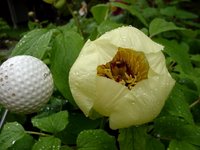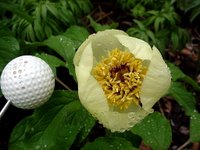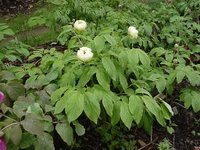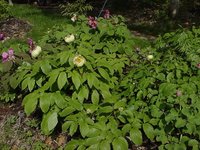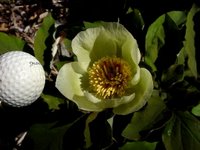 Last year I finally planted a Paeonia mairei in a bed, so I now know that it blooms about at the same time as what I had normally considered the first of the peonies. It looks like it suffered a wee whirlwind in its vicinity recently, and one of the flowering stems folded and failed before the bud could open. I didn't take a photo of the one open flower because it is somewhat windblown and ratty, or more precisely I should say shredded by raindrops and well-munched by slugs. A tidy, compact plant. For a good photo of the flower, see entries from previous years.
Last year I finally planted a Paeonia mairei in a bed, so I now know that it blooms about at the same time as what I had normally considered the first of the peonies. It looks like it suffered a wee whirlwind in its vicinity recently, and one of the flowering stems folded and failed before the bud could open. I didn't take a photo of the one open flower because it is somewhat windblown and ratty, or more precisely I should say shredded by raindrops and well-munched by slugs. A tidy, compact plant. For a good photo of the flower, see entries from previous years. The normal "first", Paeonia tomentosa or the Woolly Peony. Usually the plants down in the shade beds open a week later than the ones near the house, but this year they are opening simultaneously. No real surprise, it truly has been no brighter in the open than in the woods this year!!!! and this plant species proves it.
The normal "first", Paeonia tomentosa or the Woolly Peony. Usually the plants down in the shade beds open a week later than the ones near the house, but this year they are opening simultaneously. No real surprise, it truly has been no brighter in the open than in the woods this year!!!! and this plant species proves it.
Pale yellow with a touch of green.
Things peony-wise will look a bit imbalanced here this year: in order to get decently true seed without off-colour pollution, I will be removing the buds of the red/ magenta/ pink species plants where they overlap with the yellow species. I tried to interest a florist in them, but couldn't; so I will probably end up with floating dozens of them in trays of water in the house (and hopefully not stepping in one during a middle-watch visit to the wc)

































